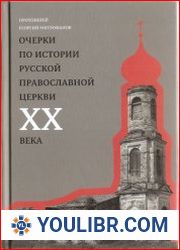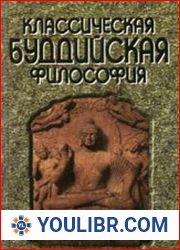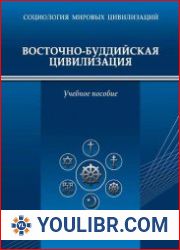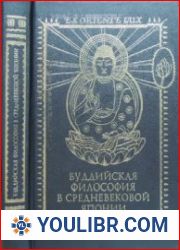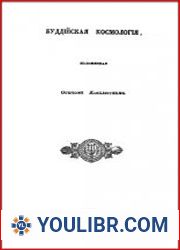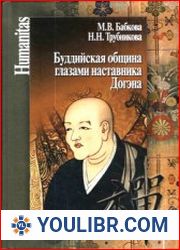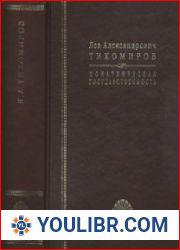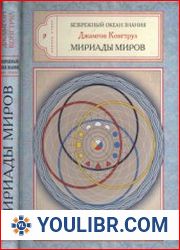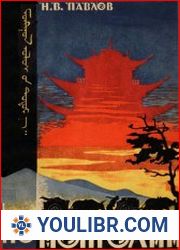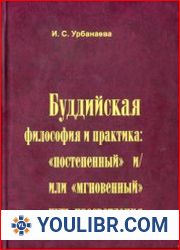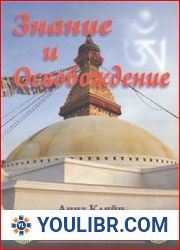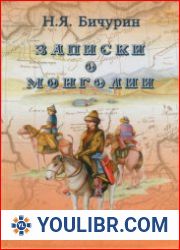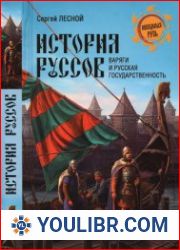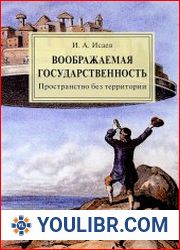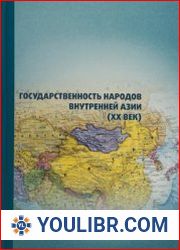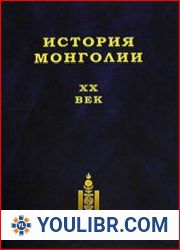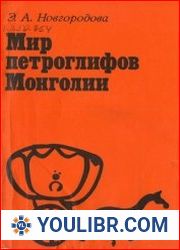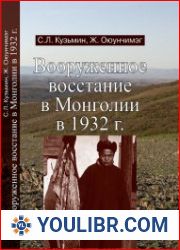
BOOKS - HUMANITIES - Теократическая государственность и буддийская церковь Монголии в...

Теократическая государственность и буддийская церковь Монголии в начале ХХ века
Author: Кузьмин С.Л.
Year: 2016
Format: PDF
File size: 75.3 MB
Language: RU

Year: 2016
Format: PDF
File size: 75.3 MB
Language: RU

The book 'Теократическая государственность и буддийская церковь Монголии в начале ХХ века' is dedicated to the history of theocratic governance in Mongolia from its inception to its dissolution in the late 1930s. The author explores the preconditions and formation of theocracy, the impact of imperial models such as the Yuan Dynasty and China on Mongolian society, the role of Buddhism and traditional authority in legitimizing the rule of the Qing Empire, and the reasons behind the successful spread of the Gelug school of Buddhism in Mongolia and the formation of theocratic structures in the state. The book begins with an overview of the historical context of Mongolia during the early 20th century, highlighting the political and social changes that took place during this period. The author then delves into the origins of theocratic governance in Mongolia, examining the factors that led to its establishment and the ways in which it evolved over time. This includes a discussion of the influence of Buddhism and traditional authority on the development of theocratic governance, as well as the role of the Gelug school in shaping the country's religious and political landscape. One of the key themes of the book is the tension between theocratic governance and modernization, as the author examines how the introduction of Western ideas and technologies challenged the traditional power structures of theocratic governance. The author argues that the success of the Gelug school in Mongolia was due to its ability to adapt to changing circumstances while maintaining its core beliefs and values.
книга 'Теократическая государственность и буддийская церковь Монголии в начале ХХ века'посвящена истории теократического управления в Монголии от его начала до его роспуска в конце 1930-х. Автор исследует предпосылки и формирование теократии, влияние имперских моделей, таких как династия Юань и Китай, на монгольское общество, роль буддизма и традиционной власти в легитимации правления Цинской империи, и причины успешного распространения школы буддизма гелуг в Монголии и формирования теократических структур в государстве. Книга начинается с обзора исторического контекста Монголии начала XX века, освещающего политические и социальные изменения, произошедшие в этот период. Затем автор углубляется в истоки теократического управления в Монголии, исследуя факторы, которые привели к его установлению, и пути его развития с течением времени. Это включает обсуждение влияния буддизма и традиционного авторитета на развитие теократического управления, а также роли школы гелуг в формировании религиозного и политического ландшафта страны. Одной из ключевых тем книги является напряжение между теократическим управлением и модернизацией, поскольку автор рассматривает, как внедрение западных идей и технологий бросило вызов традиционным властным структурам теократического управления. Автор утверждает, что успех школы гелуг в Монголии был обусловлен её способностью адаптироваться к меняющимся обстоятельствам при сохранении своих основных убеждений и ценностей.
livre « L'État théocratique et l'Église bouddhiste de Mongolie au début du XXe siècle » traite de l'histoire de la gouvernance théocratique en Mongolie depuis ses débuts jusqu'à sa dissolution à la fin des années 1930. L'auteur étudie les conditions préalables et la formation de la théocratie, l'impact des modèles impériaux tels que la dynastie Yuan et la Chine sur la société mongole, le rôle du bouddhisme et du pouvoir traditionnel dans la légitimation du règne de l'empire Qing, et les raisons de la propagation réussie de l'école du bouddhisme gelug en Mongolie et de la formation des structures théocratiques dans l'État. livre commence par un aperçu du contexte historique de la Mongolie au début du XXe siècle, qui met en lumière les changements politiques et sociaux survenus au cours de cette période. L'auteur explore ensuite les origines de la gouvernance théocratique en Mongolie, explorant les facteurs qui ont conduit à son établissement et les voies de son développement dans le temps. Il s'agit notamment de discuter de l'influence du bouddhisme et de l'autorité traditionnelle sur le développement de la gouvernance théocratique, ainsi que du rôle de l'école gelug dans la formation du paysage religieux et politique du pays. L'un des thèmes clés du livre est la tension entre la gouvernance théocratique et la modernisation, car l'auteur examine comment l'introduction des idées et des technologies occidentales a défié les structures traditionnelles de pouvoir de la gouvernance théocratique. L'auteur affirme que le succès de l'école Gelug en Mongolie est dû à sa capacité à s'adapter à l'évolution des circonstances tout en préservant ses convictions et ses valeurs fondamentales.
libro | 'La estadidad teocrática y la iglesia budista de Mongolia a principios del siglo XX'trata de la historia de la administración teocrática en Mongolia desde sus inicios hasta su disolución a finales de los 1930. autor explora los antecedentes y la formación de la teocracia, la influencia de modelos imperiales como la dinastía Yuan y China en la sociedad mongola, el papel del budismo y el poder tradicional en la legitimación del gobierno del imperio Qing, y las razones de la difusión exitosa de la escuela budista gelug en Mongolia y la formación de estructuras teocráticas en el estado. libro comienza con una revisión del contexto histórico de Mongolia de principios del siglo XX, destacando los cambios políticos y sociales que tuvieron lugar durante este período. A continuación, el autor profundiza en los orígenes de la administración teocrática en Mongolia, investigando los factores que llevaron a su establecimiento y la forma en que se desarrolló a lo largo del tiempo. Esto incluye discutir la influencia del budismo y la autoridad tradicional en el desarrollo de la gobernanza teocrática, así como el papel de la escuela gelug en la formación del panorama religioso y político del país. Uno de los temas clave del libro es la tensión entre la gestión teocrática y la modernización, ya que el autor considera cómo la introducción de ideas y tecnologías occidentales ha desafiado las estructuras de poder tradicionales del gobierno teocrático. La autora afirma que el éxito de la escuela de gelug en Mongolia se debió a su capacidad para adaptarse a las circunstancias cambiantes, manteniendo al mismo tiempo sus creencias y valores básicos.
O livro «Estado teocrático e igreja budista da Mongólia no início do século XX.» trata da história da governança teocrática na Mongólia desde o seu início até a sua dissolução no final dos anos 1930. O autor explora as premissas e a formação da teocracia, a influência de modelos imperiais, como a dinastia Yuan e a China, sobre a sociedade mongólia, o papel do budismo e do poder tradicional na legitimação do reinado do Império de Qing, e as razões para o sucesso da disseminação da escola de budismo heloug na Mongólia e a formação de estruturas teocráticas no Estado. O livro começa com uma revisão do contexto histórico da Mongólia no início do século XX, que ilumina as mudanças políticas e sociais ocorridas durante este período. Em seguida, o autor aprofundou-se na origem da governança teocrática na Mongólia, explorando os fatores que levaram ao seu estabelecimento e seus caminhos de desenvolvimento ao longo do tempo. Isso inclui o debate sobre a influência do budismo e da autoridade tradicional no desenvolvimento da governança teocrática, assim como o papel da escola Helugue na formação da paisagem religiosa e política do país. Um dos temas-chave do livro é a tensão entre governança teocrática e modernização, porque o autor vê como a introdução de ideias e tecnologias ocidentais desafiou as estruturas tradicionais de poder da governança teocrática. A autora afirma que o sucesso da escola Helugue na Mongólia se deveu à sua capacidade de se adaptar às circunstâncias em mudança, mantendo suas crenças e valores básicos.
libro «Stato teocratico e chiesa buddista della Mongolia all'inizio del XX secolo» è dedicato alla storia della gestione teocratica in Mongolia dal suo inizio alla sua dissoluzione alla fine degli annì 30. L'autore esplora i presupposti e la formazione della teocrazia, l'influenza dei modelli imperiali, come la dinastia Yuan e la Cina, sulla società mongola, il ruolo del buddismo e del potere tradizionale nella legittimazione del governo dell'impero cinesiano, e le ragioni del successo della proliferazione della scuola buddista geluga in Mongolia e della formazione di strutture teocratiche nello Stato. Il libro inizia con una panoramica del contesto storico della Mongolia all'inizio del XX secolo, che ripercorre i cambiamenti politici e sociali avvenuti in questo periodo. Poi l'autore approfondisce le origini della gestione teocratica in Mongolia, esplorando i fattori che hanno portato alla sua definizione e il suo modo di svilupparsi nel corso del tempo. Ciò include il dibattito sull'influenza del buddismo e della credibilità tradizionale sullo sviluppo della governance teocratica e sul ruolo della scuola geluga nella formazione del panorama religioso e politico del paese. Uno dei temi chiave del libro è la tensione tra gestione teocratica e modernizzazione, perché l'autore considera come l'introduzione di idee e tecnologie occidentali abbia sfidato le tradizionali strutture di potere del governo teocratico. L'autrice sostiene che il successo della scuola di geluga in Mongolia è stato dovuto alla sua capacità di adattarsi alle circostanze mutevoli mantenendo le proprie convinzioni e valori fondamentali.
Das Buch „Theokratische Staatlichkeit und buddhistische Kirche der Mongolei zu Beginn des 20. Jahrhunderts“ widmet sich der Geschichte der theokratischen Regierung in der Mongolei von ihren Anfängen bis zu ihrer Auflösung Ende der 1930er Jahre. Der Autor untersucht die Voraussetzungen und die Bildung der Theokratie, den Einfluss imperialer Modelle wie der Yuan-Dynastie und Chinas auf die mongolische Gesellschaft, die Rolle des Buddhismus und der traditionellen Macht bei der gitimation der Herrschaft des Qing-Reiches und die Gründe für die erfolgreiche Verbreitung der Gelug-Buddhismus-Schule in der Mongolei und die Bildung theokratischer Strukturen im Staat. Das Buch beginnt mit einem Überblick über den historischen Kontext der Mongolei zu Beginn des 20. Jahrhunderts und beleuchtet die politischen und sozialen Veränderungen, die in dieser Zeit stattgefunden haben. Der Autor geht dann auf die Ursprünge der theokratischen Regierung in der Mongolei ein und untersucht die Faktoren, die zu ihrer Errichtung und zu ihrer Entwicklung im Laufe der Zeit geführt haben. Dies beinhaltet eine Diskussion über den Einfluss des Buddhismus und der traditionellen Autorität auf die Entwicklung der theokratischen Regierung sowie die Rolle der Gelug-Schule bei der Gestaltung der religiösen und politischen Landschaft des Landes. Eines der Hauptthemen des Buches ist die Spannung zwischen theokratischer Regierung und Modernisierung, da der Autor untersucht, wie die Einführung westlicher Ideen und Technologien die traditionellen Machtstrukturen theokratischer Regierung in Frage stellte. Der Autor argumentiert, dass der Erfolg der Gelug-Schule in der Mongolei auf ihre Fähigkeit zurückzuführen ist, sich an veränderte Umstände anzupassen und gleichzeitig ihre grundlegenden Überzeugungen und Werte zu bewahren.
książce „Teokratyczna państwowość i buddyjski Kościół Mongolii na początku XX wieku” skupiono się na historii teokratycznego sprawowania rządów w Mongolii od początku do jej rozwiązania pod koniec lat 30. Autor bada tło i powstawanie teokracji, wpływ modeli cesarskich, takich jak dynastia Yuan i Chiny na społeczeństwo mongolskie, rola buddyzmu i tradycyjnej władzy w legitymizacji rządów imperium Qing, oraz przyczyny pomyślnego rozprzestrzeniania się szkoły buddyzmu w Gelug w Mongolii i tworzenia struktur teokratycznych w państwie. Książka zaczyna się od przeglądu kontekstu historycznego Mongolii na początku XX wieku, podkreślając przemiany polityczne i społeczne, które miały miejsce w tym okresie. Następnie autor zagłębia się w początki teokratycznego sprawowania rządów w Mongolii, badając czynniki, które doprowadziły do jego powstania i jak ewoluował z czasem. Obejmuje to omówienie wpływu buddyzmu i tradycyjnego autorytetu na rozwój zarządzania teokratycznego, a także roli szkoły gelug w kształtowaniu religijnego i politycznego krajobrazu kraju. Jednym z kluczowych tematów książki jest napięcie między teokratycznym rządzeniem a modernizacją, ponieważ autor rozważa, jak wprowadzenie zachodnich idei i technologii podważyło tradycyjne struktury władzy teokratycznego sprawowania rządów. Autor twierdzi, że sukces szkoły Gelug w Mongolii wynikał z jego zdolności adaptacji do zmieniających się okoliczności przy zachowaniu podstawowych przekonań i wartości.
''
'Yirminci yüzyılın başında teokratik devlet ve Moğolistan Budist Kilisesi'kitabı, Moğolistan'daki teokratik yönetim tarihine, 1930'ların sonlarındaki başlangıcından dağılmasına kadar odaklanmaktadır. Yazar, teokrasinin arka planını ve oluşumunu, Yuan Hanedanlığı ve Çin gibi emperyal modellerin Moğol toplumu üzerindeki etkisini araştırıyor. Qing İmparatorluğu'nun yönetimini meşrulaştırmada Budizm'in ve geleneksel gücün rolü, Moğolistan'da Gelug Budizm okulunun başarılı bir şekilde yayılmasının ve devlette teokratik yapıların oluşmasının nedenleri. Kitap, 20. yüzyılın başında Moğolistan'ın tarihsel bağlamına genel bir bakış ile başlar ve bu dönemde meydana gelen siyasi ve sosyal değişimleri vurgular. Yazar daha sonra Moğolistan'daki teokratik yönetimin kökenlerini araştırıyor, kurulmasına yol açan faktörleri ve zaman içinde nasıl geliştiğini inceliyor. Bu, Budizm'in ve geleneksel otoritenin teokratik yönetimin gelişimi üzerindeki etkisinin yanı sıra Gelug okulunun ülkenin dini ve politik manzarasını şekillendirmedeki rolünün tartışılmasını da içerir. Kitabın ana temalarından biri teokratik yönetişim ve modernleşme arasındaki gerilimdir, çünkü yazar Batı fikirlerinin ve teknolojilerinin tanıtılmasının teokratik yönetişimin geleneksel güç yapılarına nasıl meydan okuduğunu düşünmektedir. Yazar, Moğolistan'daki Gelug okulunun başarısının, temel inanç ve değerlerini korurken değişen koşullara uyum sağlama yeteneğinden kaynaklandığını iddia ediyor.
الكتاب | «الدولة الثيوقراطية والكنيسة البوذية في منغوليا في بداية القرن العشرين» على تاريخ الحكم الثيوقراطي في منغوليا منذ بدايتها وحتى انحلالها في أواخر الثلاثينات. يستكشف المؤلف خلفية وتكوين الثيوقراطية، وتأثير النماذج الإمبراطورية مثل أسرة يوان والصين على المجتمع المغولي، دور البوذية والسلطة التقليدية في إضفاء الشرعية على حكم إمبراطورية تشينغ، وأسباب الانتشار الناجح لمدرسة جيلوغ البوذية في منغوليا وتشكيل الهياكل الثيوقراطية في الدولة. يبدأ الكتاب بلمحة عامة عن السياق التاريخي لمنغوليا في بداية القرن العشرين، مع تسليط الضوء على التغيرات السياسية والاجتماعية التي حدثت خلال هذه الفترة. ثم يتعمق المؤلف في أصول الحكم الثيوقراطي في منغوليا، ويفحص العوامل التي أدت إلى إنشائها وكيف تطورت بمرور الوقت. ويشمل ذلك مناقشة تأثير البوذية والسلطة التقليدية على تطوير الحكم الثيوقراطي، وكذلك دور مدرسة جيلوغ في تشكيل المشهد الديني والسياسي للبلاد. أحد الموضوعات الرئيسية للكتاب هو التوتر بين الحكم الثيوقراطي والتحديث، حيث ينظر المؤلف في كيفية تحدي إدخال الأفكار والتقنيات الغربية لهياكل السلطة التقليدية للحكم الثيوقراطي. 3-1 يدعي صاحب البلاغ أن نجاح مدرسة غيلوغ في منغوليا يرجع إلى قدرتها على التكيف مع الظروف المتغيرة مع الحفاظ على معتقداتها وقيمها الأساسية.
책 '20 세기 초 몽골의 신권 국가와 불교 교회'는 1930 년대 후반 몽골의 신권 통치의 역사에 초점을 맞추고있다. 저자는 신권주의의 배경과 형성, 위안 왕조와 중국과 같은 제국 모델이 몽골 사회에 미치는 영향을 탐구합니다. 청나라의 통치를 합법화하는 데있어 불교와 전통의 힘의 역할, 몽골의 Gelug 불교 학교가 성공적으로 확산되고 국가의 신권 구조가 형성되는 이유. 이 책은 20 세기 초 몽골의 역사적 맥락에 대한 개요로 시작하여이시기에 일어난 정치적, 사회적 변화를 강조합니다. 그런 다음 저자는 몽골의 신권 통치의 기원을 탐구하여 설립으로 이어진 요인과 시간이 지남에 따라 어떻게 진화했는지 조사합니다. 여기에는 신권 통치의 발전에 대한 불교와 전통적 권위의 영향과 국가의 종교적, 정치적 환경을 형성하는 데 Gelug 학교의 역할에 대한 토론이 포함됩니다. 이 책의 주요 주제 중 하나는 서구의 아이디어와 기술의 도입이 신권 거버넌스의 전통적인 힘 구조에 어떻게 도전했는지를 고려함에 따라 신권 거버넌스와 현대화 사이의 긴장이다. 저자는 몽골에서 Gelug 학교의 성공은 기본적인 신념과 가치를 유지하면서 변화하는 환경에 적응할 수있는 능력 때문이라고 주장합니다.
著書「20世紀初頭のモンゴルの神権国家と仏教教会」では、1930代後半のモンゴルの神権統治の始まりから解体までの歴史に焦点を当てている。著者は、神権政治の背景と形成、元王朝や中国などの帝国モデルのモンゴル社会への影響、 清帝国の支配を正当化する仏教と伝統的な力の役割、 そして、モンゴルの仏教のゲルグ派の普及と国家の神権的構造の形成の成功の理由。この本は、20世紀初頭のモンゴルの歴史的文脈の概観から始まり、この時期に起こった政治的、社会的変化を強調している。著者は、モンゴルにおける神権的統治の起源を掘り下げ、その確立につながった要因とそれが時間の経過とともにどのように進化したかを調べます。これには、仏教と伝統的な権威が神権的統治の発展に及ぼす影響や、国の宗教的、政治的景観を形成するためのゲルグ派の役割についての議論が含まれます。著者は、西洋の思想や技術の導入が神権的統治の伝統的な権力構造にどのように挑戦したかを考察している。著者は、モンゴルのゲルグ学校の成功は、その基本的な信念と価値観を維持しながら、状況の変化に適応する能力に起因すると主張している。
《二十世紀初蒙古的神權國家與佛教教會》一書講述了蒙古神權政府從成立到1930代後期解散的歷史。作者探討了神權統治的背景和形成,元朝和中國等帝國主義模式對蒙古社會的影響,佛教和傳統權威在清帝國統治合法化中的作用,以及格魯派在蒙古成功傳播的原因以及國家神權結構的形成。該書首先回顧了20世紀初蒙古的歷史背景,突出了這一時期發生的政治和社會變化。然後,作者深入探討了蒙古神權統治的起源,探討了導致其建立的因素及其隨著時間的推移的發展方式。這包括討論佛教和傳統權威對神權治理發展的影響,以及格魯派在塑造國家宗教和政治格局中的作用。該書的主要主題之一是神權治理與現代化之間的緊張關系,因為作者研究了西方思想和技術的引入如何挑戰神權治理的傳統權力結構。提交人認為,蒙古格魯格學校的成功是因為它能夠適應不斷變化的環境,同時保持其基本信仰和價值觀。







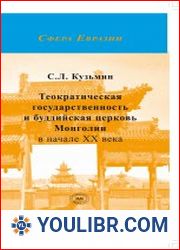
 49
49  1 TON
1 TON





